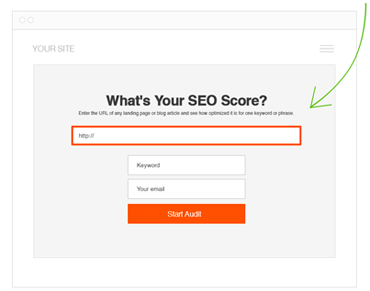Website Accessibility in 2024: Your Guide to Checking and Conquering

The internet should be a welcoming space for everyone, regardless of ability. In 2024, website accessibility will no longer be just a best practice; it will be an essential aspect of web design. An accessible website ensures everyone can find the information and interact with your content seamlessly. But with ever-evolving accessibility standards, how do you check your website’s accessibility? Worry not; this comprehensive guide will equip you with the knowledge and tools to assess and improve your website’s accessibility in 2024.
Understanding WCAG: The Accessibility Roadmap
The Web Content Accessibility Guidelines (WCAG) serve as the international standard for website accessibility. The current version, WCAG 2.1, outlines specific criteria for making web content accessible to people with disabilities. These criteria are grouped into four key principles: Perceivable, Operable, Understandable, and Robust (POUR). By ensuring your website meets WCAG guidelines, you’re creating a more inclusive user experience.
Testing Your Website: A Multi-faceted Approach
There’s no single magic bullet for website accessibility testing. A successful approach combines automated tools, manual testing, and user testing with people with disabilities.
- Automated Testing Tools: Numerous free and paid tools can scan your website for accessibility issues. These tools analyze code, identify potential problems like missing alt text for images or insufficient color contrast, and suggest solutions.
- Manual Testing: While automated tools provide a great starting point, manual testing is crucial. Use keyboard navigation tools to ensure your website is fully functional without a mouse. Review content clarity and structure to ensure it’s easy to understand.
- User Testing with People with Disabilities: The ultimate test is real-world experience. Partner with organizations that represent people with disabilities to conduct user testing. Their feedback will provide invaluable insights into how accessible your website truly is.
Popular Accessibility Testing Tools in 2024
Here are some popular tools to get you started with website accessibility testing:
Free:
- Accessibility Checker by WebAIM: [Accessibility Checker ON WebAIM webaim.org] (offers free scan and basic recommendations)
- WAVE Web Accessibility Evaluation Tool: WAVE Web Accessibility Evaluation Tool (identifies accessibility issues based on WCAG)
Paid:
- SiteImprove Accessibility: [SiteImprove Accessibility ON siteimprove.com] (comprehensive accessibility testing and remediation platform)
- axe Pro: [Deque axe for chrome ON deque.com] (advanced accessibility testing tool with detailed reports)
- accessibe: [accessibe.com] (automated and AI-powered accessibility solution with real-time monitoring)
Beyond Tools: Ongoing Accessibility Practices
Accessibility shouldn’t be a one-time fix. Here are some additional practices to ensure long-term website accessibility:
- Integrate Accessibility into Development: Accessibility should be considered from the very beginning of the web development process, not bolted on later.
- Regular Testing and Monitoring: Schedule regular accessibility testing and monitoring to catch any issues introduced by updates or new content.
- Accessibility Training: Educate your development and content creation teams on best practices for creating accessible websites.
The Benefits of Accessibility: Beyond Compliance
Investing in website accessibility goes beyond legal compliance. Here are some compelling reasons to prioritize accessibility:
- Reach a Wider Audience: An accessible website opens doors to a broader user base, including people with disabilities, who represent a significant portion of the online population.
- Improved SEO: Search engines like Google favor accessible websites, potentially boosting your search engine ranking.
Enhanced Brand Reputation: Demonstrating a commitment to accessibility portrays your company positively, fostering trust and brand loyalty.
By following these steps and embracing accessibility best practices, you can ensure your website is inclusive and welcoming. Remember, a truly accessible website isn’t just good for compliance; it’s good for business and positively impacts the digital landscape.
 May 27, 2024
May 27, 2024


